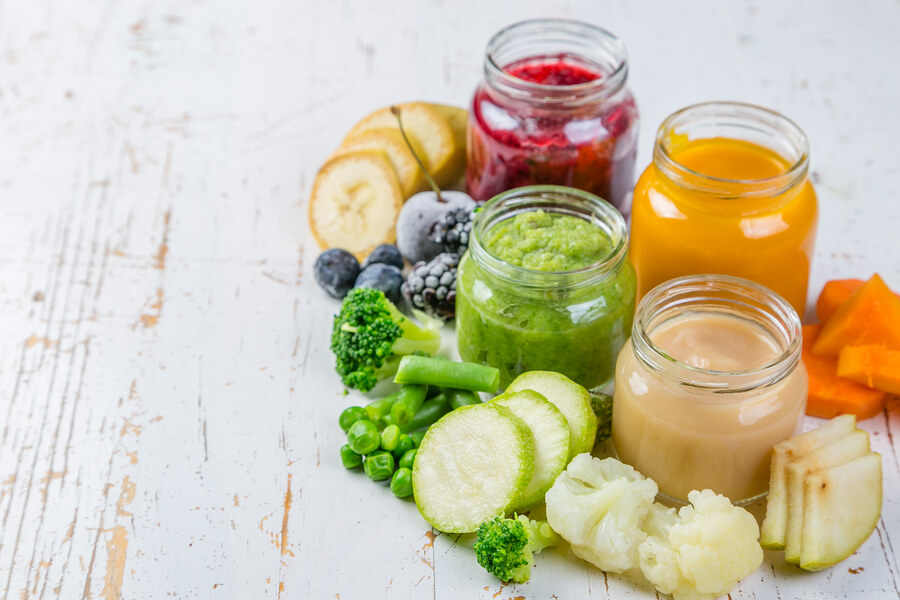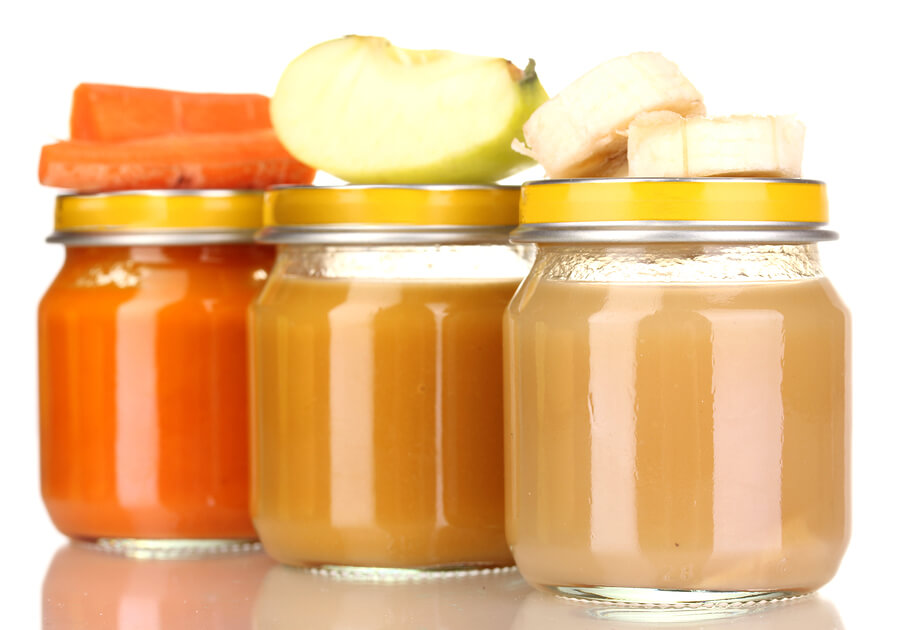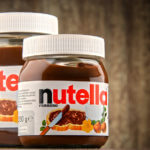Table of Contents
The Case for Homemade and Wholesome Baby Food: Nourishing Your Little One from the Start
Motherhood brings joy, sleepless nights, and an overwhelming concern for your baby's well-being, particularly their nutrition. In the quest for optimal nutrition, homemade and wholesome baby food takes center stage. This article explains why homemade baby food is a beneficial, viable choice for your little one, backed by scientific evidence.
Understanding the Basics: What is Homemade Baby Food?
Homemade baby food, in its simplest terms, refers to meals prepared for infants within the comfort of your own home using fresh, premium-quality ingredients. This approach to feeding your baby endows you with the unique opportunity to exercise complete control over every aspect of your baby's meals, from selecting the precise ingredients to deciding how they are prepared.
Why is this important? Well, these factors can dramatically influence the nutrient profile of your baby's meals. By personally sourcing and preparing the food, you are empowered to optimize the nutritional value of each bite your baby takes, shaping their health and development in the most direct, hands-on way. This active involvement is what sets homemade baby food apart, making it a choice worthy of consideration for health-conscious parents.

The Wholesome Advantage: Nutritional Benefits of Homemade Baby Food
The reputation of homemade food being superior to commercially prepared alternatives isn't without basis, especially when it comes to infant meals. Here are the significant nutritional advantages that homemade baby food offers:
Transparency of Ingredients
When you prepare your baby's food at home, you're privy to every ingredient that goes into each meal. There's no need to puzzle over convoluted food labels, nor worry about hidden sugars, salts, or preservatives that may be surreptitiously present in commercial baby food products.
Maximized Nutrient Content
Freshly prepared foods typically have a higher nutrient retention rate compared to their commercially processed counterparts. By selecting fresh fruits and vegetables, lean proteins, and wholesome grains, you provide your baby with nutrient-rich meals that contribute significantly to their growth and development.
Personalized Meal Plans
The beauty of homemade baby food lies in its flexibility. You're empowered to tweak the ingredients based on your baby's unique needs and taste preferences. Whether it's catering to allergies, excluding specific foods, or adjusting the texture and consistency to match your baby's eating progress, you have full control over every aspect of their meals.
Cost-Effective
While it might seem counterintuitive, making your baby food can actually save money in the long run. You can buy fresh produce in season or in bulk, prepare large quantities of food, and freeze it in individual portions, reducing waste and making the most of your budget.
Taste and Variety
Introducing your baby to the true tastes of whole foods from an early age can set the stage for healthy eating habits as they grow. Unlike store-bought options that often come in limited flavors, homemade food offers a broad spectrum of taste experiences, encouraging your baby to develop a varied palate.
Freshness
Commercially processed baby foods need a long shelf-life, which often means they are heat-treated to kill bacteria, potentially affecting taste and nutritional value. In contrast, homemade baby food, prepared and consumed fresh, ensure your baby is getting the most from their meals in terms of flavor and nutritional content.
Reduced Environmental Impact
Making your baby food can be more sustainable and less wasteful. By buying whole foods and reducing reliance on single-use packaged baby food, you are contributing to less packaging waste and a lower carbon footprint.

Food Safety and Hygiene: Essential Precautions in Homemade Baby Food Preparation
When venturing into the realm of homemade baby food, food safety and hygiene must be at the forefront of your preparation efforts. Here are some indispensable precautions that should guide your cooking process:
Prioritizing Cleanliness
It's crucial to ensure all utensils, preparation surfaces, and indeed your hands are meticulously cleaned before you begin preparing baby food. Any lingering dirt or bacteria can potentially contaminate the food and pose a health risk to your baby.
Appropriate Cooking Methods
The importance of properly cooking certain foods cannot be overstated. This is particularly true for meats, which need to be thoroughly cooked to eliminate any potentially harmful bacteria. In addition, fruits and vegetables should be well washed to remove any residual pesticides or dirt.
Careful Food Storage
Correct storage of homemade baby food is another safety measure that is often overlooked. Once prepared, baby food should be stored in the refrigerator within two hours to inhibit bacterial growth. Homemade baby food is best used within one to two days when refrigerated, or it can be frozen for longer-term storage. Remember, once thawed, the food should not be frozen again.
Portion Control
When starting with solids, your baby will only need small quantities. By preparing appropriate portions, you can ensure food doesn't sit out for long periods, reducing the risk of contamination.
Temperature Checks
Ensure that the food is at an appropriate temperature before feeding it to your baby. Always test the temperature of heated food to prevent burns, and equally, make sure thawed food is not too cold for your baby's comfort and safety.
Rotating Ingredients
Regularly changing the types of foods you use in your baby's meals can prevent excessive exposure to any potential allergens or contaminants that might be present in a specific type of food. This practice also promotes a diverse diet, which is beneficial for your baby's nutritional intake.
Avoiding Certain Foods
Some foods carry a higher risk of causing foodborne illnesses and should be avoided in baby food. These include raw or undercooked eggs, unpasteurized dairy products, and honey in children under 12 months due to the risk of botulism.
Fostering Healthy Eating Habits: The Long-Term Impact
The introduction of homemade and wholesome food during infancy can sow the seeds of healthy eating habits that extend into adulthood. Here's a closer look at the benefits:
Acquaintance with Authentic Flavors
Unlike the uniform taste of many commercial baby foods, homemade baby food introduces your little one to the authentic, diverse flavors of fresh, unprocessed food. This early exposure can cultivate a preference for these natural tastes as they grow, promoting a lifelong affinity for healthy, whole foods.
Encouraging a Varied Palate
Home-prepared baby food gives you the ability to expose your child to a wide array of fruits, vegetables, grains, and proteins. By rotating the ingredients used in their meals, your baby will not only receive a wide range of necessary nutrients but also develop a broad palate. This early exposure to food diversity can encourage a more adventurous eater, less resistant to trying new foods as they grow older.
Establishing Healthy Eating Patterns
The healthy eating habits formed in these early years often persist into adulthood. By starting with homemade, nutrient-dense baby food, you are setting the foundation for your child's future eating patterns, potentially impacting their health positively in the long run.
Promoting a Healthy Relationship with Food
By being involved in the preparation of their food, children can gain an appreciation for the ingredients and the process. As they grow older, this can encourage a more mindful approach to eating and a healthier overall relationship with food.

Diversifying Flavors and Textures: The Homemade Edge
One of the key advantages of homemade baby food lies in its potential for introducing a myriad of tastes and textures. Here's how:
Unveiling a Symphony of Flavors
Homemade baby food offers an expansive palette of flavors. Unlike store-bought versions, which often have a homogenous taste due to standardization, homemade food allows your baby to experience the real, individual flavors of each ingredient. This exposure can foster an appreciation for a variety of flavors from an early age.
Introducing Textural Diversity
Commercial baby foods often share a similar, uniform texture. In contrast, homemade food can incorporate a variety of textures. From purees and mashed foods to soft chunks, your baby can explore a range of consistencies. This textural diversity can play a vital role in developing your baby's oral motor skills and can facilitate a smoother transition to solid foods in their later stages.
Customizable Consistencies
Preparing your baby's food at home also gives you the flexibility to adjust the consistency based on your baby's age, preferences, and comfort level. Starting from smoother purees for early weaning, you can gradually move to coarser textures and eventually to appropriately sized solid pieces as your baby grows. This gradual transition can make the process of weaning less stressful for both you and your baby.
Experience with Whole Foods
By using whole ingredients in homemade baby food, you can begin introducing your baby to the concept of whole foods early on. They can start recognizing different types of foods like fruits, vegetables, and grains by their colors and textures, setting the stage for understanding a balanced diet as they grow older.
Catering to Individual Preferences
Homemade food gives you the flexibility to cater to your baby's individual taste preferences, which can change over time. If your baby develops a liking for certain flavors or textures, you can easily incorporate more of those ingredients into their meals. Conversely, less preferred foods can be presented in different ways to encourage acceptance.
Taste and Texture Pairing
Homemade baby food allows you to experiment with pairing different flavors and textures. Combining foods in this way can help your baby appreciate complex flavor profiles and could promote a more adventurous eater.
Step-by-Step Guide to Making Your Own Baby Food
Making baby food at home isn't as daunting as it may seem. Here's a basic step-by-step guide:
Selecting Prime Ingredients
The first step towards creating nourishing homemade baby food is selecting fresh, high-quality ingredients. Choose a variety of fruits, vegetables, and protein sources to ensure a nutrient-rich diet for your baby. Organic produce can be a good option to avoid potential pesticide exposure.
Maintaining Hygiene Standards
Proper hygiene is paramount when preparing baby food. Start by thoroughly cleaning all utensils, cutting boards, and blenders that you plan to use. Also, remember to wash your hands meticulously before you start the process to eliminate any potential contaminants.
Food Preparation
Depending on what you're preparing, the food might require washing, peeling, chopping, de-seeding, or de-boning. For fruits and vegetables, rinse thoroughly under running water. For meats, remove all visible fat and bones.
Cooking the Food
The cooking method you choose can significantly impact the nutritional content of the food. Steaming is a preferred method as it preserves most of the nutrients in the food. For meats, ensure they are cooked thoroughly to kill any harmful bacteria.
Pureeing the Food
After the food has been cooked and cooled, puree it using a blender or food processor. You can add a little water, breast milk, or formula to reach the desired consistency, especially for younger babies just starting on solids. As your baby grows older, you can make the food chunkier to help them adapt to different textures.
Cooling and Storing
It's important to cool the food quickly to prevent bacterial growth. Once cooled, the pureed food can be stored in the refrigerator for up to 48 hours, or in the freezer for longer periods. Remember to store the food in small, baby-sized portions for convenience and to avoid wastage.
Helpful Tips for Storing Homemade Baby Food
When it comes to storing homemade baby food, there are a few key points to keep in mind:
Optimal Containers for Storage
To maintain the quality and freshness of homemade baby food, store it in small, airtight containers. This prevents air from getting in and spoiling the food. Alternatively, you can use ice cube trays to portion out the food. Once the food cubes are frozen, transfer them to a freezer-safe bag or container. This way, you can conveniently thaw the exact amount of food needed for each feeding.
Labeling the Containers
Keeping track of when the food was made is crucial for food safety. Always label the containers or bags with the date of preparation. This will help you rotate your stock and ensure that you use the oldest food first. It's recommended to use the frozen homemade baby food within one to three months for optimal quality and taste.
Safe Thawing Methods
Proper thawing of baby food is as important as its preparation and storage. To defrost, place the frozen food in the refrigerator overnight or until it's thawed completely. If you need it quicker, you can also put it in a bowl of warm (not hot) water. Never use a microwave to thaw or heat baby food as it can create hotspots and potentially burn your baby. Also, remember that once thawed, the food should never be refrozen.
Properly Sealing Containers
When using airtight containers or bags for storage, make sure they are properly sealed. This prevents any potential contamination from other foods or substances in the freezer or refrigerator. A good seal also maintains the food's flavor and nutritional integrity by preventing freezer burn.
Maintaining Cold Temperatures
Ensure your freezer and refrigerator maintain consistent cold temperatures. The freezer should be at or below 0°F (-18°C) and the refrigerator at or below 40°F (4°C). This prevents the growth of harmful bacteria that could spoil the food.
Transitioning from Commercial to Homemade Baby Food: A Practical Approach
Transitioning from store-bought to homemade baby food can be a gradual process. Start by introducing one homemade meal a day, then increase as your baby gets used to the new flavors and textures
Recipe Ideas for Wholesome Homemade Baby Food
Initiating your infant into the realm of diverse flavors and textures can be an exciting journey. With homemade baby food, the opportunities to mix and match nutrient-rich ingredients are plentiful. Here are a few delectable and nutritious recipe suggestions to kickstart your homemade baby food adventure. Remember, it's crucial to introduce new foods gradually to monitor for any potential allergic reactions.
Tempting Apple Puree
Begin by steaming peeled, cored, and finely chopped apples until they turn soft and tender. Using a blender or food processor, puree the steamed apples into a silky mixture, adding a dash of boiled, cooled water if needed to attain the desired consistency.
Hearty Sweet Potato Mash
For this nutrient-dense recipe, bake a whole sweet potato until it's soft enough to be easily pierced with a fork. Once cooled, peel off the skin and mash the sweet potato's nutrient-rich, orange flesh until smooth. The mashed sweet potato can be served as it is or diluted with a bit of breast milk or formula for a creamier texture.
Avocado-Banana Medley
This no-cook recipe is an excellent source of healthy fats, vitamins, and minerals for your little one. Mash a ripe avocado and banana together until you reach a soft, creamy consistency. This naturally sweet and smooth combination makes an ideal first food for babies.
Chicken-Vegetable Symphony
For this recipe, boil bite-sized pieces of chicken breast along with a variety of vegetables like peas, carrots, and sweet potatoes until tender. Once cooked, puree the chicken and vegetables in a blender. The consistency of the puree can be altered based on your baby's stage of weaning – keep it chunkier for older babies ready for more texture.
Nourishing Quinoa Porridge
Cook quinoa in water following package instructions until it's soft. Blend the cooked quinoa until you achieve a smooth consistency. Then, combine it with breast milk, formula, or water to create a wholesome, protein-rich porridge for your baby. This recipe introduces babies to new textures and is filled with essential amino acids necessary for their growth and development.
How to Handle Potential Allergens in Homemade Baby Food
The thought of introducing potentially allergenic foods to your baby's diet can be a source of apprehension for many parents. However, with a careful and structured approach, this can be successfully navigated. Here are some practical strategies for handling potential allergens in homemade baby food:
Introduce Single Allergenic Foods Individually
It's advisable to introduce potentially allergenic foods such as dairy, eggs, peanuts, tree nuts, fish, and shellfish one by one. This isolated introduction ensures that if your baby experiences an allergic reaction, the causative food can be easily identified and removed from the diet.
Maintain an Observation Period
After introducing a potential allergen, it's crucial to maintain a waiting period of a few days before adding another allergenic food to the mix. During this time, keep a vigilant eye out for signs of a food allergy. Symptoms can vary but often include skin reactions (like hives or red, itchy skin), coughing, wheezing, vomiting, diarrhea, or even more severe reactions like swelling of the lips, face, or throat.
Adopt a Gradual Approach
When introducing a potential allergen, start with a tiny amount. If your baby doesn't exhibit any allergic reactions, you can progressively increase the quantity over several days. This gradual introduction allows your baby's immune system time to adapt and can potentially reduce the risk of an allergic response.
Final Thoughts: The Commitment to Homemade and Wholesome Baby Food
Embarking on the journey of preparing homemade baby food is indeed a dedication — a pledge towards prioritizing your child's health and nutritional well-being. Though it may initially appear overwhelming, with proper organization and a step-by-step, incremental approach, the task becomes manageable and eventually second nature.
When you invest time and effort into creating these meals from scratch, you're not just preparing food; you're offering your child a nutritional foundation that is rich, varied, and tailored to their needs. It's about giving them a positive start in their relationship with food, one that emphasizes the importance of fresh, unprocessed ingredients.
Sources
- https://our.today/a-new-study-shows-homemade-baby-food-not-better-than-store-bought/
- https://www.ctvnews.ca/health/homemade-baby-food-contains-as-many-toxic-metals-as-store-bought-options-report-says-1.6023113
- https://www.thebump.com/news/homemade-baby-food-toxic-metals
- https://hbbf.org/report/is-homemade-baby-food-better




Comments
Loading…